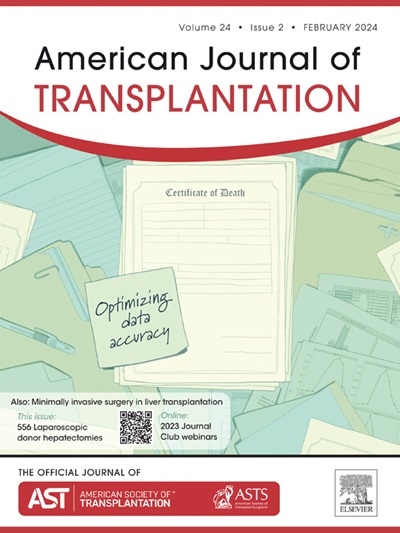Mouse orthotopic liver transplantation: Challenges, achievements, and applications
IF 8.2
2区 医学
Q1 SURGERY
引用次数: 0
Abstract
The surgically challenging mouse orthotopic liver transplant model has provided numerous insights into liver immunobiology, cellular and molecular regulation of liver transplant ischemia-reperfusion injury, liver regeneration, the influence of major histocompatibility complex antigens on transplant outcome, spontaneous transplant tolerance, and regulation of allograft immunity. Nonarterialized and arterialized models have been established. Reduced-size liver transplant models have also been developed and used to determine critical mass and factors that determine tissue injury and regeneration. Since its first description 3 decades ago, the surgical demands of the model have limited its application to a relatively small number of centers focused on basic liver transplant research. Dissemination of and commitment to acquisition of the required technical skills will facilitate the application of cutting-edge experimental approaches to which the mouse model is well-suited and allow important key basic and translational questions in transplant immunology to be addressed.
小鼠原位肝移植:挑战、成就和应用
具有外科挑战性的小鼠原位肝移植模型为肝脏免疫生物学、肝移植缺血-再灌注损伤的细胞和分子调控、肝再生、MHC抗原对移植结果的影响、“自发”移植耐受和同种异体移植免疫调节提供了许多见解。非动脉化和动脉化模型已经建立,小尺寸肝移植模型也被开发出来,并用于确定临界质量和决定组织损伤和再生的因素。自30年前首次描述以来,该模型的手术需求限制了其应用于相对较少的专注于基础肝移植研究的中心。传播和承诺获得所需的技术技能将促进小鼠模型非常适合的尖端实验方法的应用,并允许移植免疫学中重要的关键基础和转化问题得到解决。
本文章由计算机程序翻译,如有差异,请以英文原文为准。
求助全文
约1分钟内获得全文
求助全文
来源期刊
CiteScore
18.70
自引率
4.50%
发文量
346
审稿时长
26 days
期刊介绍:
The American Journal of Transplantation is a leading journal in the field of transplantation. It serves as a forum for debate and reassessment, an agent of change, and a major platform for promoting understanding, improving results, and advancing science. Published monthly, it provides an essential resource for researchers and clinicians worldwide.
The journal publishes original articles, case reports, invited reviews, letters to the editor, critical reviews, news features, consensus documents, and guidelines over 12 issues a year. It covers all major subject areas in transplantation, including thoracic (heart, lung), abdominal (kidney, liver, pancreas, islets), tissue and stem cell transplantation, organ and tissue donation and preservation, tissue injury, repair, inflammation, and aging, histocompatibility, drugs and pharmacology, graft survival, and prevention of graft dysfunction and failure. It also explores ethical and social issues in the field.

 求助内容:
求助内容: 应助结果提醒方式:
应助结果提醒方式:


